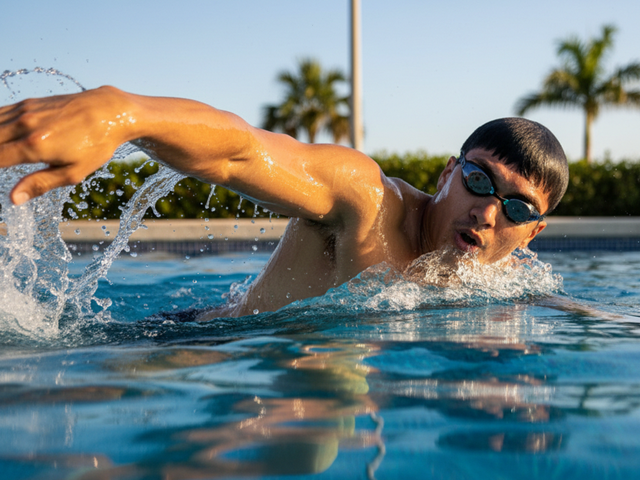Below are the forms of exercise considered best for people with fatty liver:
Fast walking
Brisk walking is one of the simplest yet most effective ways to reduce liver fat. This exercise increases energy expenditure and promotes fatty acid oxidation in the muscles, thereby reducing the transport of fat to the liver, according to the health website Verywell Health (USA).

Swimming increases energy metabolism, reduces visceral fat and improves insulin sensitivity
PHOTO: AI
A clinical trial published in the journal JAMA Internal Medicine found that moderate to vigorous aerobic exercise, including brisk walking, can reduce liver fat by 35-40%. This effect persists even when the weight loss is only 3-6%.
In addition, liver enzyme indexes ALT, AST also improved significantly after 8-12 weeks of training. For beginners, just 30 minutes of brisk walking a day, 5 days a week, can bring obvious benefits.
Cycling
Cycling is another option for those who want to build endurance but put less stress on their joints. There is a growing body of research showing that both moderate continuous cycling and high-intensity interval cycling can reduce liver fat, improve liver function, and increase insulin sensitivity.
Cycling on a stationary bike or outdoors is fine, as long as you maintain 20-60 minutes per session, 3-5 times per week. Combining high and low intensity exercises also increases the effectiveness.
Swimming
Swimming is a full-body exercise that increases energy expenditure while causing less damage to joints. Although there has not been much specific research on swimming and fatty liver, the effects of swimming on the mechanism are similar to other endurance exercises such as brisk walking and cycling.
Specifically, swimming will increase energy metabolism, reduce visceral fat and improve insulin sensitivity. Swimming allows the body to maintain moderate to high intensity exercise for a long time, while supporting the circulatory and respiratory systems. Beginners can start with 10-15 minutes at a time and gradually increase to 20-30 minutes. Changing swimming styles such as breaststroke, freestyle or backstroke not only diversifies the exercise but also activates many different muscle groups, helping to increase fat burning efficiency.
Strength training
Strength training is an indispensable type of exercise in the training regimen for people with fatty liver. Unlike endurance training, strength training does not consume much energy during exercise but increases muscle mass, thereby increasing the basal metabolic rate even at rest.
Several human studies have shown that continuous strength training for 20 weeks or more significantly improves liver enzymes ALT, AST. When combining both aerobic and strength training, the effectiveness of improving fatty liver is even higher. Patients can exercise 2-3 times/week, focusing on large muscle groups such as legs, back, chest and shoulders, according to Verywell Health .
Source: https://thanhnien.vn/4-bai-tap-tot-nhat-giup-cai-thien-gan-nhiem-mo-185251003133129962.htm


![[Photo] Solemn opening of the 8th Congress of the Central Public Security Party Committee, term 2025-2030](https://vphoto.vietnam.vn/thumb/1200x675/vietnam/resource/IMAGE/2025/10/4/f3b00fb779f44979809441a4dac5c7df)



![[Photo] General Secretary To Lam attends the 8th Congress of the Central Public Security Party Committee](https://vphoto.vietnam.vn/thumb/1200x675/vietnam/resource/IMAGE/2025/10/4/79fadf490f674dc483794f2d955f6045)
![[Photo] Bustling Mid-Autumn Festival at the Museum of Ethnology](https://vphoto.vietnam.vn/thumb/1200x675/vietnam/resource/IMAGE/2025/10/4/da8d5927734d4ca58e3eced14bc435a3)


















































![[VIDEO] Summary of Petrovietnam's 50th Anniversary Ceremony](https://vphoto.vietnam.vn/thumb/402x226/vietnam/resource/IMAGE/2025/10/4/abe133bdb8114793a16d4fe3e5bd0f12)
![[VIDEO] GENERAL SECRETARY TO LAM AWARDS PETROVIETNAM 8 GOLDEN WORDS: "PIONEER - EXCELLENT - SUSTAINABLE - GLOBAL"](https://vphoto.vietnam.vn/thumb/402x226/vietnam/resource/IMAGE/2025/7/23/c2fdb48863e846cfa9fb8e6ea9cf44e7)






























Comment (0)